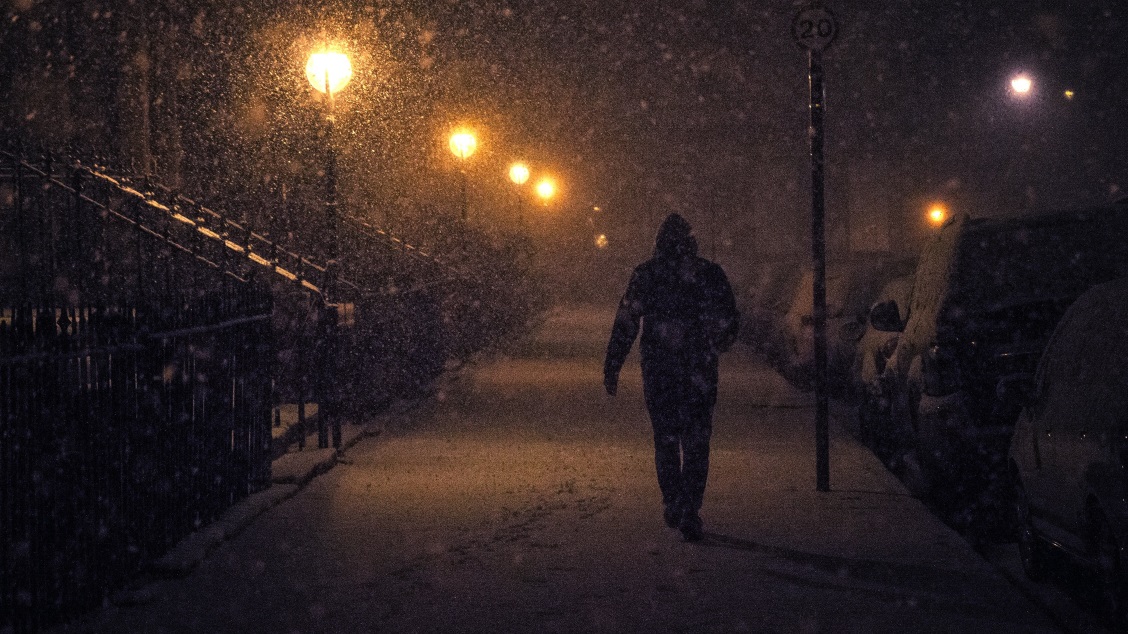
Why do we get SAD during winter?
Winter can be beautiful. For some, it’s the cosy presence of seasonal festivities that makes it special. For others, it’s a good time to wrap up warm, enjoy the snow and indulge in some well-deserved time off.
But during the winter months, a lot of people experience winter blues. The official medical term for winter blues is seasonal affective disorder, or SAD. This disorder causes a person to feel sad or depressed during the winter months due to the cold or lack of sunlight.
We still don’t know exactly how or why the lack of sun causes SAD. But, we know that less sunlight affects our circadian rhythm and the production of certain hormones. This could help us understand why productivity and mood dip drastically during winter.
There are also a few things to help with the symptoms of SAD to keep you as healthy as possible until it comes to the end of the short days and long nights.
How a lack of sunlight affects our circadian rhythm
The circadian rhythm is the natural body’s clock and is responsible for our sleep-wake pattern. Our bodies are usually in sync with the times of the day. So when it gets dark, our bodies know it is time for sleep and rest.
This phenomenon is due to receptors in the retinas of our eyes which detect sunlight. This detection inhibits the production of a sleep hormone called melatonin. Melatonin is an essential component of our circadian rhythm and for inducing sleep. That’s why people who struggle with sleep or have insomnia can take melatonin supplements to improve their sleep.
As there is a lot less sunlight during the winter months, the production of melatonin is not inhibited as much. Hence, feelings of tiredness and lethargy during the day are common, leading to a reduction in motivation and productivity.
Why do we feel sad during winter?
In essence, when our bodies are bathed in a consistent flood of sleepy hormones triggered by a lack of sunlight, we feel more inclined to curl up and spend the evening in, rather than braving the cold and darkness outside.
But this doesn’t tell us why we experience low moods during the winter months. We don’t know exactly why a lack of sunlight makes us feel this way, but scientists have put forward a few potential theories to try and understand the effects of SAD a little bit more.
The serotonin model for SAD
One theory which could explain people’s dip in mood during winter is the serotonin model. This model has been thought to explain the pathogenesis of clinical depression. Serotonin is a hormone produced by our brain. A drop in the production and availability of serotonin has been linked to clinical depression.
Vitamin D and SAD
A key component known as vitamin D has been linked to the production of serotonin. The main source of vitamin D is through sun exposure (hence, it is known as the sunshine vitamin), followed by diet. As there is a significant reduction in sunlight exposure during the winter months, people produce less vitamin D in their skin and perhaps less serotonin.
MDPI’s research published in Psychiatry International reviews the effect of different living environments, including sunshine exposure on mental health. It discusses how there are mixed results regarding the efficacy of vitamin D on the improvement of depressive symptoms.
One study shows a significant improvement in depressive symptoms in subjects treated with high levels of vitamin D compared to the placebo group. This illustrated that depressive symptoms could help with vitamin D supplementation. However, another study showed that vitamin D supplementation may only be helpful for people who have clinical depression, and not SAD-related depression.
These results show that, although vitamin D is linked to serotonin production and symptoms of depression, more research is needed to clarify the relationship and how effective it can be for people suffering from SAD.
Regardless of the inconsistent results of the relationship between vitamin D and SAD, studies show that exposure to light can work as an effective treatment for SAD.
Light exposure therapy for SAD
Clinical trial evidence has shown that light exposure therapy has helped to decrease symptoms in cases of SAD. This type of therapy uses something called a lightbox to imitate natural sunlight without the harmful effect of the UV rays that the sun emits.
It is usually recommended to use a lightbox within the first hour of waking up every morning for around 20‒30 minutes. Currently, research is being carried out to see if this type of therapy is also effective for patients with non-SAD-related depressive symptoms as well as symptoms of bipolar.
One theory for this could be that exposure to the light emitted reduces the brain’s production of melatonin. As mentioned previously, this could help reduce tiredness felt by people with SAD. It could also increase the availability of serotonin, improving overall mood.
Outside of light box therapy and traditional therapies to combat low moods, there are some small things one can do to help ease the effects of SAD.
Small things to help symptoms of SAD
Symptoms of SAD during winter include but are not limited to:
- Feelings of fatigue
- Irritability
- Persistent low mood
- Feeling less sociable
- Low self-esteem
- Finding it difficult to concentrate
- Feeling anxious
There are small things you can do in your day-to-day life that can help improve such symptoms. If you are struggling, or think you may have SAD, contact your local health provider for the best possible treatment for you.
Exercise
Exercise is probably one of the most helpful methods of shaking excessive feelings of fatigue and improving low mood. This is primarily due to the induction and release of the ‘feel good hormones,’ otherwise known as endorphins.
This effect is demonstrated in a study published in the International Journal of Environmental Research and Public Health. This study measured how high-intensity exercise can impact how sensitive subjects are to seasonal changes. The results confirmed that people who exercised regularly at high intensities may experience less sensitivity to seasonal changes and hence have better well-being.
Along with exercise, it is important to make the most out of the limited hours of sunlight – and what better way to do this than enjoying it in nature?
Connecting with Nature
The healing effect of nature has been well-established throughout time with research showing its positive effects on well-being and mental health.
A study shows how exposure to nature is associated with lower levels of depression being linked to multiple health benefits. This includes helping us to feel more calm during our busy days. Furthermore, research suggests that nature helps to enhance mental cognition, which includes an improvement in our attention span and concentration.
The importance of our connection to nature is sometimes forgotten, especially in heavily developed spaces and urban areas. Taking some time out amongst greenery can be a great way to practice mindfulness and lower stress, and may help to reduce the effects of low mood triggered by SAD.
Conclusion
In summary, there are a few things that have been shown to help ease the burden of SAD symptoms, including daily light box therapy, exercising and connecting with nature.
More research is needed to identify exactly how SAD can make such an impact on people’s mental health. There are important links between sun exposure, vitamin D and serotonin as well as the circadian rhythm. It will be interesting to see exactly how and why they can impact mental health so drastically during the winter months.
If you are interested in reading more about this kind of work, you can see all published research immediately and for free in MDPI’s Clocks and Sleep or International Journal of Environmental Research and Public Health. If you would like to submit your work, please see MDPI’s full list of journals.










